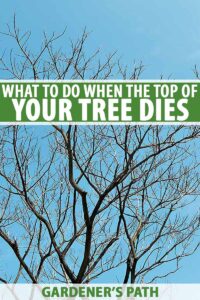Should i plant a tree in my backyard?
Trees form an integral component of any landscaping plan for residential homes and are a major factor in the aesthetics, design, and ecological appeal of well-planned backyards. If you prefer deciduous trees that have dramatic autumnal foliage or for hardy evergreen trees which provide shade throughout the year There are numerous benefits of planting the trees you have in your yard.
1. Reduced energy costs
The planting of trees on the sunniest areas of your home will significantly decrease the amount of solar gain that your home experiences during the warmer months. This can in turn reduce the temperature inside and the requirement for air cooling. Trees also cool air by a process known as evapotranspiration. This process releases moisture in the air.
In cooler climates, a tree canopy may provide windbreaks and can minimize drafts. Deciduous trees are great for climates that vary, with warm summers and cool winters because the tree will fall its foliage in winter , allowing for the maximum amount of sunlight to warm your home.
2. 2. GREEN SCREEN
Making the right choice of tree can help in ensuring privacy in the backyard and also screening neighboring properties. This is a case of visual screening, as well as offering a noise-buffer.
The best tree species to screen include evergreen trees with thick foliage, like the fern pine (Podocarpus gracior) and Japanese loquat (Eriobotrya japonica).
3. EYE-CATCHING COLORING
The trees are often neglected by those who want to add some shade to their outdoor space Many homeowners opt for annuals to bring dazzling colors to their gardens. A variety of tree species provide striking autumnal foliage with shades of vibrant oranges, deep reds along with golden yellows.
Sugar maple (Acer saccharum) and American sweetgum (Liquidambar styraciflua) provide a beautiful display in autumn before taking their leaves down for winter. Many tree species bloom all year long; for instance, the Hong Kong orchid tree (Bauhinia x Blakeana) is a fragrant fuchsia flower that bloom from the fall until mid-spring. The crape myrtle (Lagerstroemia indica) produces voluminous and bold blooms of red, white purple, pink and white blooms in the fall and summer months.
4. Shades for outdoor GATHERING Spaces
The canopy of a tree can be an organic extension of living space in your backyard. In addition to creating a more pleasant environment to be outside during hot summers, shade by trees could reduce the cost of irrigation through slowing the rate of evaporation within the soil around it and in the plants.
A shade tree that is suitable for your needs can make the most of the most modest of outdoor areas. When you plant a tree in a tight space or a smaller backyard, choose trees that don’t have roots that are aggressive to prevent the foundation from being damaged. The trees that are planted in patios like Eastern redbud (Cercis canadensis) and Japanese maple (Acer palmatum) are great for small backyards because they are smaller and aren’t prone to root issues.
5. EDIBLE options
Local food specialists will tell you that there’s nothing more satisfying then eating an apple fruit straight from the tree. Bring a little bit from the farm into the backyard with the planting of a plant that produces crop.
Citrus trees are a favorite among gardeners who are at home because of the quantity of fruit that is produced and the attractive foliage. Persimmon trees can be a great choice because of the wide range of varieties available that can be adapted to the majority of American conditions and soil varieties.
6. WILDLIFE HABITAT
The shift towards eco-friendly urban areas has resulted in the development of many nature reserves and greenbelts. A tree planted in your backyard could in the creation of a healthy ecosystem by providing habitat to wildlife, insects and squirrels. Trees that have a beautiful blossom attract bees as well as the other insects that pollinate..
Inviting biodiversity into your garden through planting plants that supply nectar and pollen; southern magnolia (Magnolia grandiflora) and crabapple (Malus spp.) are among the most attractive species of trees for bees because of their beautiful and fragrant flowers.
7. ECO-FRIENDLY EFFECTS
Apart from enhancing diversity, trees have a major role to play in other ecological roles such like carbon storage. Through photosynthesis plants absorb carbon dioxide before releasing oxygen. Carbon dioxide levels that are high in the air are believed to increase the negative effects of climate changes. Trees can help reduce some carbon dioxide that is produced in any particular zone.
Additionally, trees aid in reducing the effects of urban heat islands. In areas that have large proportions of un-covered structures and paved areas the temperature can get even more extreme when there is a lack of a dense canopy of trees. Through casting shade and releasing water via evapotranspiration, the trees help to make the areas they are in more habitable and less susceptible for extreme temperature.
8. Higher PROPERTY AMOUNTS
Apart from saving energy costs for cooling and heating Trees also have the economic benefit of increasing property value. Numerous studies have proven that trees can boost property values by as much as 15% because of the well-known benefits of the mature canopy of trees. Property buyers are attracted by the shade, improved air quality and the overall character mature trees bring to a home.
The advantages of the planting of trees in your backyard offer a variety of ecological, economic, and aesthetic benefits. Trees can make the world better living space and are available in a variety of sizes and shapes that can be adapted to the requirements of each property. Be sure to take into consideration factors like sunlight exposure, climate, and soil when deciding on the right tree for your garden.

